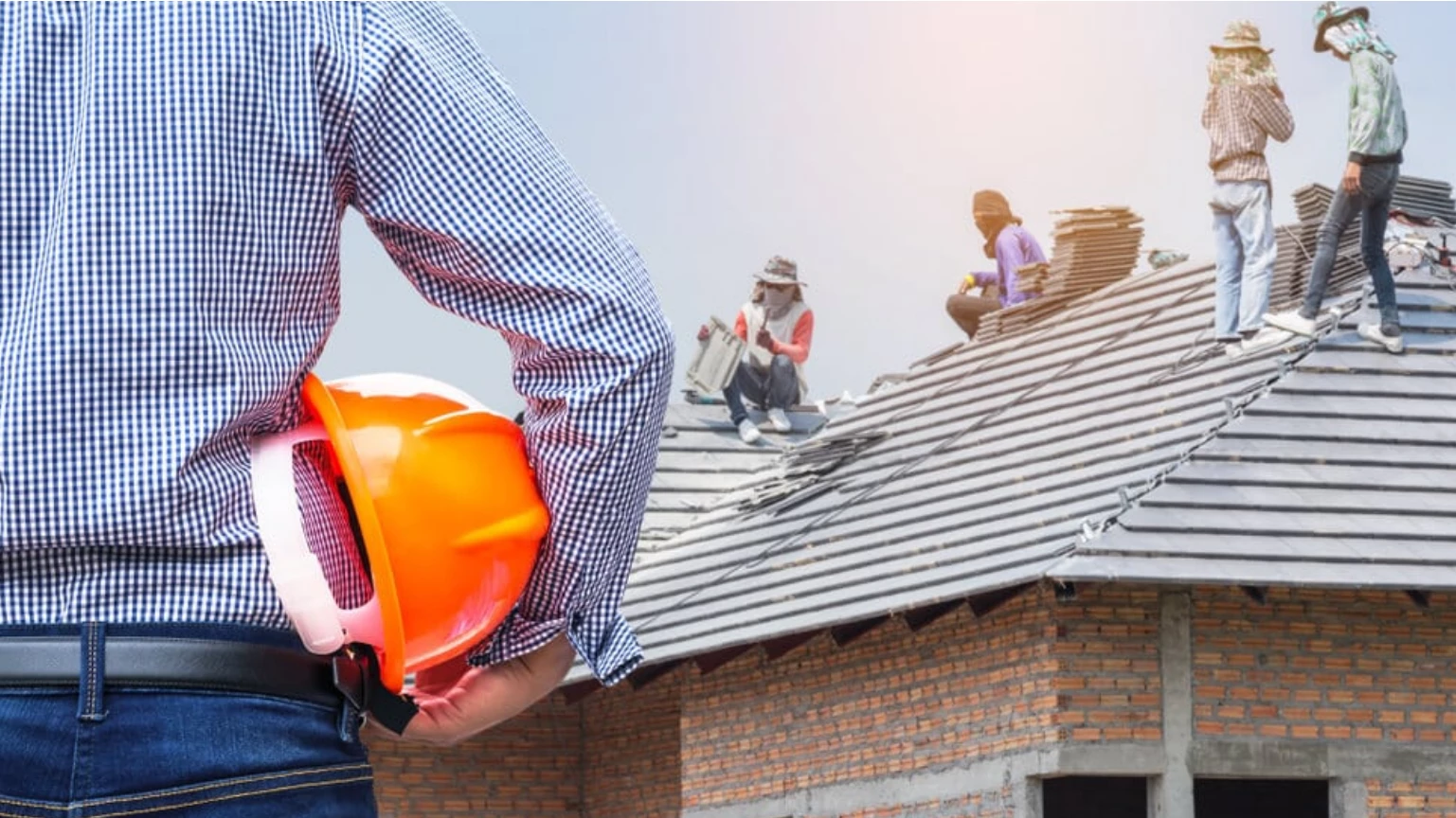
When you think about uncovering the history of a neighborhood, your mind probably drifts to dusty archives, old photos, or neighborhood historians. But have you ever considered that a local roofer might be one of the best sources to learn about the past of your community? Roofers don’t just fix shingles or replace gutters—they often become silent witnesses to decades of neighborhood stories.
By scaling roofs, inspecting attics, and working on home exteriors, they uncover surprising details that reveal a rich tapestry of history woven into the very fabric of your local area.
Let’s explore how these unsung historians of the skyline reveal hidden narratives about your neighborhood’s past and why the phrase “a roofer near me” might mean a lot more than just home repairs.
How Can Roofers Uncover Hidden Details About a Community?
Roofers have a unique vantage point—both literally and figuratively. When they’re working on a house, they’re not just looking at the roof but the entire building, its structure, and sometimes even the surrounding environment. Here’s how roofers pick up on details that most residents overlook:
- Layered Roofing Materials: Many older homes have multiple layers of roofing materials stacked beneath the visible shingles. Each layer tells a story about the era when the roof was last replaced and the popular materials of that time. A roofer might find slate tiles from the 1920s beneath modern asphalt shingles, hinting at the home’s age and upgrades over time.
- Construction Techniques: Roofers notice framing styles, the type of nails used, and other construction details that differ by decade or architectural trend. These elements reveal when the home was built and sometimes the economic status of the original owners.
- Repairs and Patches: A patchwork roof or hasty repairs can indicate a neighborhood that has seen cycles of prosperity and hardship. Roofers often interpret these “scars” as evidence of storms, economic downturns, or changes in neighborhood demographics.
- Unique Features: Some roofs have distinct features such as chimneys, dormer windows, or cupolas that hint at historic building codes or architectural preferences in a certain era or region.
- Surrounding Context: Roofers working across multiple homes in a neighborhood recognize patterns—like similarities in roofing styles or materials—that reveal how communities evolved collectively.
Through these observations, roofers gain intimate knowledge about the homes—and by extension, the neighborhood—that most people never see.
Why Do Local Roofers Know More About Neighborhood Changes Over Time?
Local roofers are often lifelong residents or at least familiar faces in their communities. Their work requires them to visit many homes, giving them direct exposure to a wide variety of properties over years or even decades. This consistent involvement means they:
- Witness Generational Changes: Roofers see neighborhoods transition as families grow, sell, or renovate homes. They observe when older properties are torn down or when new construction springs up.
- Track Economic Fluctuations: In times of economic boom, roofers notice more elaborate designs and higher-end materials. Conversely, during tougher times, homes might have delayed repairs or use more budget-friendly options.
- Understand Local Weather Impact: Weather patterns affect roofing choices and maintenance needs. Over years, roofers observe how communities adapt to climate shifts—like storms becoming more frequent, which influence roofing upgrades or replacements.
- Hear Resident Stories: Often, clients share anecdotes about their homes, previous owners, or neighborhood legends during roof consultations. These stories enrich roofers’ understanding of community history and collective memory.
- Participate in Community Events: Local roofers are more than tradespeople; they’re part of neighborhood networks, attending community meetings, supporting local initiatives, or just chatting with neighbors. This social engagement deepens their historical awareness.
Because of this ongoing relationship with homes and people, local roofers have a front-row seat to the living history of neighborhoods.
What Patterns in Roofing Reveal Past Trends in Local Architecture?
Every community has a unique architectural fingerprint shaped by local tastes, available materials, and historical periods. Roofers, as experts, can read this architectural language by examining roofing patterns:
- Material Popularity Over Time
- Wood Shingles and Shake Roofs: Popular in early 20th-century homes, especially Craftsman and Bungalow styles.
- Slate and Tile: Found in historic homes with Colonial Revival or Mediterranean influences.
- Asphalt Shingles: Became the standard mid-century, reflecting industrial advances and affordability.
- Metal Roofing: Emerging in modern renovations, often for durability or eco-friendly reasons.
- Wood Shingles and Shake Roofs: Popular in early 20th-century homes, especially Craftsman and Bungalow styles.
- Roof Shapes and Styles
- Gable Roofs: Common in many early American homes for their simplicity and effectiveness at shedding rain and snow.
- Hip Roofs: Indicative of Southern influences, offering better wind resistance.
- Flat Roofs: Seen in mid-century modern and commercial buildings.
- Mansard Roofs: Reflect French architectural trends from the 19th century, rare but distinctive.
- Gable Roofs: Common in many early American homes for their simplicity and effectiveness at shedding rain and snow.
- Decorative Elements
- Skylights, dormers, and ornate eaves can hint at specific architectural movements and homeowner preferences.
- Skylights, dormers, and ornate eaves can hint at specific architectural movements and homeowner preferences.
By noticing these patterns, roofers essentially map the neighborhood’s architectural evolution and provide clues about the socio-economic trends that shaped it. For example, a shift from simple gable roofs to more elaborate tile roofs might indicate a neighborhood’s growing wealth or changing cultural influences.
How Does Roofing Work Expose Historical Shifts in Building Materials?
The history of roofing materials is a microcosm of technological advances, economic factors, and environmental awareness. Roofers uncover these shifts every day:
- From Natural to Manufactured Materials
Early roofing often utilized locally sourced materials—wood, slate, clay tiles—reflecting available resources and craftsmanship. As industrialization progressed, mass-produced asphalt shingles and metal roofing became popular, offering cost-effective and easier-to-install options. - Durability and Fire Safety Improvements
In some regions, fires devastated communities, prompting changes in roofing materials toward more fire-resistant options like metal or slate. Roofers find these historical markers embedded in the layers they remove or repair. - Environmental Considerations
Recent decades have seen the rise of green roofing materials—cool roofs, solar tiles, and recycled materials—as neighborhoods adapt to climate concerns. Roofers witnessing these changes firsthand document the latest chapter in roofing history. - Economic Influences on Material Choices
During the Great Depression or post-war periods, roofing material choices were often dictated by budget constraints, with homeowners opting for cheaper, quicker fixes. Roofers’ experiences reveal these economic cycles through the condition and type of roofing they encounter. - Building Code Evolutions
As safety codes and building standards evolve, roofing materials and installation techniques must comply with new regulations. Roofers see these changes manifest in the form of newer underlayments, flashing methods, or ventilation systems, which also tell a story about neighborhood modernization efforts.
All these factors combined mean that every roof is a historical document written in shingles and nails, with roofers as the translators.
Why It Matters: Beyond Roof Repairs
You might wonder why any of this neighborhood history matters beyond curiosity. Here’s why it’s worth appreciating:
- Preserving Neighborhood Character: Understanding the architectural and historical context helps homeowners and communities make restoration choices that maintain a neighborhood’s charm and identity.
- Informed Renovations: Roofers can advise clients on appropriate materials and styles that honor historical integrity while incorporating modern improvements.
- Community Pride: Sharing these hidden histories fosters a stronger connection among neighbors, celebrating shared heritage and identity.
- Spotting Potential Issues Early: Recognizing old construction methods or materials helps roofers identify vulnerabilities that might require special attention during repairs or inspections.
- Boosting Property Value: Well-maintained homes that respect historical context often hold or increase their value better than those with incongruous updates.
Next time you search for “a roofer near me” or watch a crew atop a home in your neighborhood, remember that these professionals are more than fixers of leaks and storm damage. They are living archives of your community’s past, quietly piecing together stories through shingles and timbers. By appreciating their unique perspective, you gain a richer understanding of how your neighborhood evolved—one roof at a time.
So, whether you’re a homeowner, history buff, or just curious, listen closely the next time a roofer shares a tidbit about your home. You might just uncover the unexpected history hiding right above your head.
Discover How Eason Roofing Brings Neighborhood History to Life — One Roof at a Time
At Eason Roofing, we don’t just replace or repair roofs—we become part of your home’s ongoing story. Our expert team brings decades of local experience and a deep understanding of neighborhood history, allowing us to tailor every job to the unique character of your community. When you choose us, you’re not getting just another roofing contractor; you’re partnering with professionals who respect your home’s heritage while providing top-tier craftsmanship and modern technology.
Here’s how working with Eason Roofing benefits you in ways beyond a sturdy roof:
- Customized Solutions Rooted in Local Expertise
We know the architectural trends and materials that define our neighborhoods. This means your roof will honor your home’s original style and comply with local regulations, preserving its value and aesthetic appeal. - Transparent Communication with a Historical Perspective
Our team will walk you through the history behind your roof’s condition and explain the best options for restoration or upgrade—no jargon, just clear facts. - Durability Meets Authenticity
Using high-quality materials and proven techniques, we ensure your roof withstands the elements while reflecting the neighborhood’s character. - Community-Focused Service
We’re not just contractors—we’re your neighbors. Our reputation is built on trust, care, and commitment to keeping our community’s homes safe and beautiful.
Experience roofing that respects the past and protects your future. Reach out to Eason Roofing today and let’s craft a roof that tells your home’s story for decades to come.




